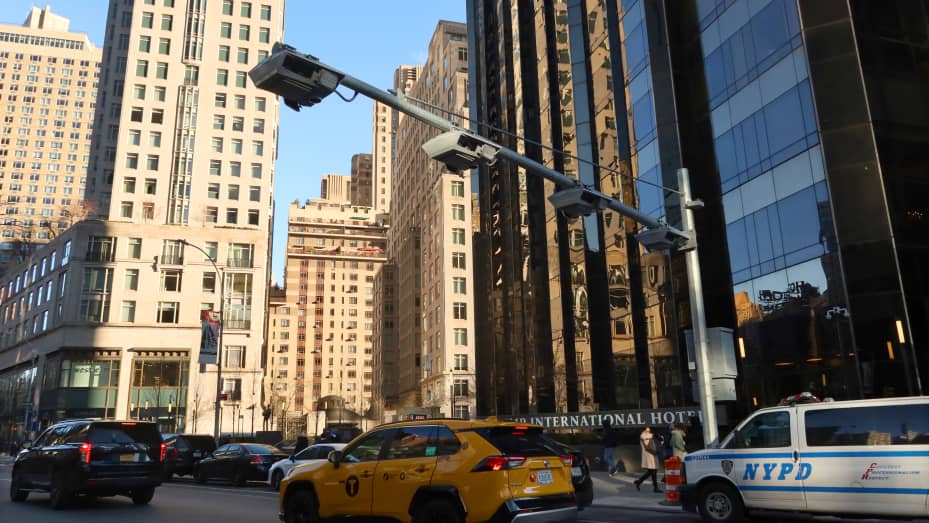New York City’s groundbreaking approval of congestion tolls marks a significant milestone in urban transportation policy in the United States. With the Metropolitan Transportation Authority’s recent greenlighting of a $15 fee for most motorists entering Manhattan’s central business district, the city is poised to implement congestion pricing in an effort to alleviate traffic congestion, improve air quality, enhance public transit, and generate much-needed revenue for transportation infrastructure. This article delves into the implications, challenges, and potential solutions associated with New York’s congestion toll, examining its impact on commuters, businesses, the environment, and the broader transportation ecosystem.
Understanding Congestion Tolling: Congestion tolling, a strategy already employed in cities like London and Singapore, involves charging motorists a fee for driving into designated congestion zones during peak hours. The rationale behind congestion pricing is to reduce traffic congestion, incentivize alternative modes of transportation, and fund transportation infrastructure projects. In New York City, the proposed $15 toll aims to discourage driving in the busiest parts of Manhattan, particularly during peak traffic hours, while encouraging commuters to opt for public transit, cycling, or walking.
Implications for Commuters and Businesses: For commuters, the implementation of congestion tolls presents both challenges and opportunities. While the toll may deter some from driving into Manhattan, particularly those traveling for work or leisure, it could also impose additional financial burdens on workers who rely on personal vehicles for transportation. Moreover, businesses that rely on truck deliveries or rely on driving into the city may face increased operating costs, which could potentially be passed on to consumers. Balancing the needs of commuters and businesses while achieving the goals of congestion pricing requires careful planning, stakeholder engagement, and policy adjustments.
Environmental and Public Health Benefits: One of the primary objectives of congestion tolling is to reduce traffic congestion and vehicular emissions, thereby improving air quality and public health outcomes. By incentivizing mode shifts towards public transit, walking, and cycling, congestion pricing has the potential to mitigate the harmful effects of air pollution and greenhouse gas emissions associated with motor vehicle traffic. Additionally, by promoting more efficient use of roadways and reducing idling times, congestion tolls can contribute to energy conservation and environmental sustainability, aligning with broader efforts to combat climate change and promote sustainable urban development.
Equity Considerations and Social Impacts: While congestion pricing has the potential to yield significant benefits in terms of traffic reduction and environmental improvement, it also raises important equity considerations and social impacts. Critics argue that congestion tolls disproportionately burden low-income commuters who may have limited access to public transit alternatives or flexible work arrangements. Additionally, concerns have been raised about the potential regressive nature of congestion pricing, whereby the financial burden falls disproportionately on marginalized communities. Addressing these equity concerns requires proactive measures, such as targeted subsidies, transportation assistance programs, and equitable distribution of toll revenues to benefit underserved communities.
Policy Implementation and Governance: The successful implementation of congestion tolling in New York City hinges on effective policy design, robust governance structures, and stakeholder collaboration. Key considerations include defining the boundaries of the congestion zone, setting appropriate toll rates, implementing enforcement mechanisms, and ensuring transparency and accountability in toll revenue allocation. Moreover, effective communication and public outreach are essential to garnering public support, addressing misconceptions, and fostering understanding of the rationale behind congestion pricing. Collaborative efforts between government agencies, transportation authorities, advocacy groups, and community stakeholders are crucial to navigating the complexities of policy implementation and ensuring that congestion tolling serves the interests of all New Yorkers.
As New York City prepares to implement congestion tolls, it stands at the forefront of innovative urban transportation solutions aimed at addressing traffic congestion, improving air quality, and enhancing the overall quality of life for its residents. While challenges and concerns remain, including equity considerations, economic impacts, and logistical challenges, congestion pricing represents a bold step towards creating a more sustainable, efficient, and equitable transportation system. By embracing inclusive and evidence-based approaches to policy implementation, New York City has the opportunity to serve as a model for other cities grappling with urban mobility challenges and to pave the way for a greener, more resilient future.
